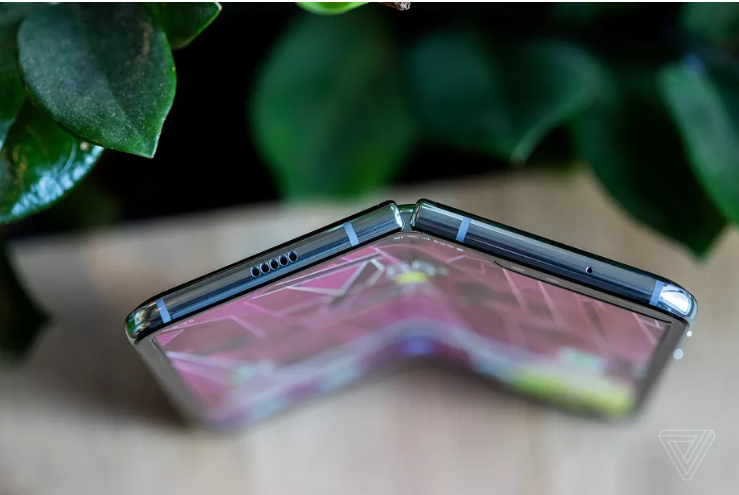
This article is more than
6 year old
Samsung has announced today that it has made “improvements” to protect the Galaxy Fold’s screen and will begin selling it soon. Four months after the company delayed the retail launch of the folding phone, Samsung now says the Galaxy Fold will be available for purchase at an unspecified date in September. The price is expected to remain $1980.
Here’s what Samsung says it has changed on the new version of the Galaxy Fold:
The top protective layer of the Infinity Flex Display has been extended beyond the bezel, making it apparent that it is an integral part of the display structure and not meant to be removed.
Galaxy Fold features additional reinforcements to better protect the device from external particles while maintaining its signature foldable experience:
The top and bottom of the hinge area have been strengthened with newly added protection caps.
Additional metal layers underneath the Infinity Flex Display have been included to reinforce the protection of the display.
The space between the hinge and body of Galaxy Fold has been reduced.
Extending the “protective layer” is maybe the most important thing Samsung could have done, as many reviewers thought it was a screen protector and tried to peel it off, damaging the screen. The “additional reinforcements” to protect against “external particles” is likely to prevent the thing we experienced on our own review unit — we suspect debris got in through the hinge and damaged the screen from behind. Same with the reduction of the space between the hinge and the body.
Here is a comparison of the two versions of the Fold, with the new one on the left.

You can really see the difference in this detail image, the new version is the one in front, positioned below the old one. There’s an extra piece inside the hinge:
:no_upscale()/cdn.vox-cdn.com/uploads/chorus_asset/file/18333749/COMPARO1.jpg)
The original Galaxy Fold very nearly made it to market, but review units — including ours — started developing serious hardware problems almost immediately. Some reviewers peeled off a protective film that was meant to be permanent, damaging the screen. We didn’t do that, but our original unit nevertheless developed a broken screen — possibly because debris got in under the hinge. It was a catastrophic result for a device that was seeded to a very small number of reviewer — such a high percentage of them ran into issues, there’s no telling what would have happened had Samsung released the phone to the general public.
That’s why, faced with multiple, high-profile reports of issues, Samsung officially delayed the release of the $1980 device and cancelled preorders. That was on April 22nd, when the company promised to investigate and resolve the issues with the screen. The intervening months have not been drama-free, either. Samsung requested iFixit pull a teardown from the internet, carriers scrambled to make sense of the situation, and Samsung’s co-CEO kept dropping hints that everything would turn out okay in the end.
If it weren’t for the screen issues, the original Galaxy Fold would have been an intriguing but incredibly delicate device — one that would have struggled to justify anything close to its $1980 price. Unless Samsung has done something significant to the software and the screen’s overall durability separate from the above fixes, the revamped version could have the same issues. You can be sure we’ll review it when it comes out.
Co-CEO DJ Koh ultimately admitted that the company pushed the original Fold out to market “before it was ready,” adding that “It was embarrassing.” That’s an understatement, but at the very least Samsung got out ahead of the Fold’s problems before it shipped to consumers (reviewers suffered instead, but that’s our job).
Samsung#GalaxyFold ready for launch starting from September. Find out more: https://t.co/9eIVHLeyHy pic.twitter.com/kDW8DnpE42
— Samsung US Newsroom (@SamsungNewsUS) July 25, 2019